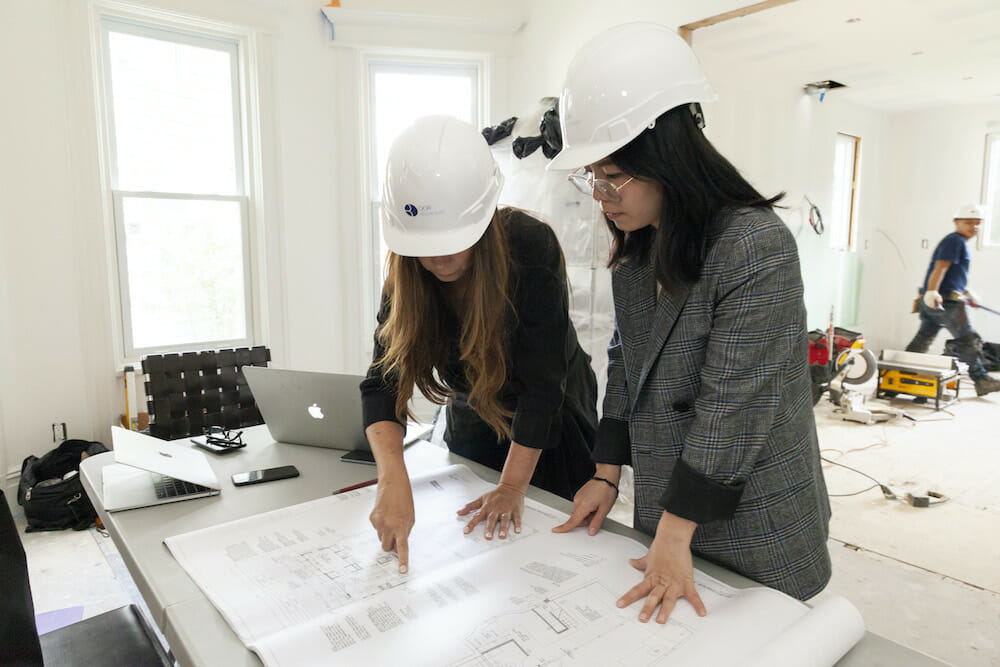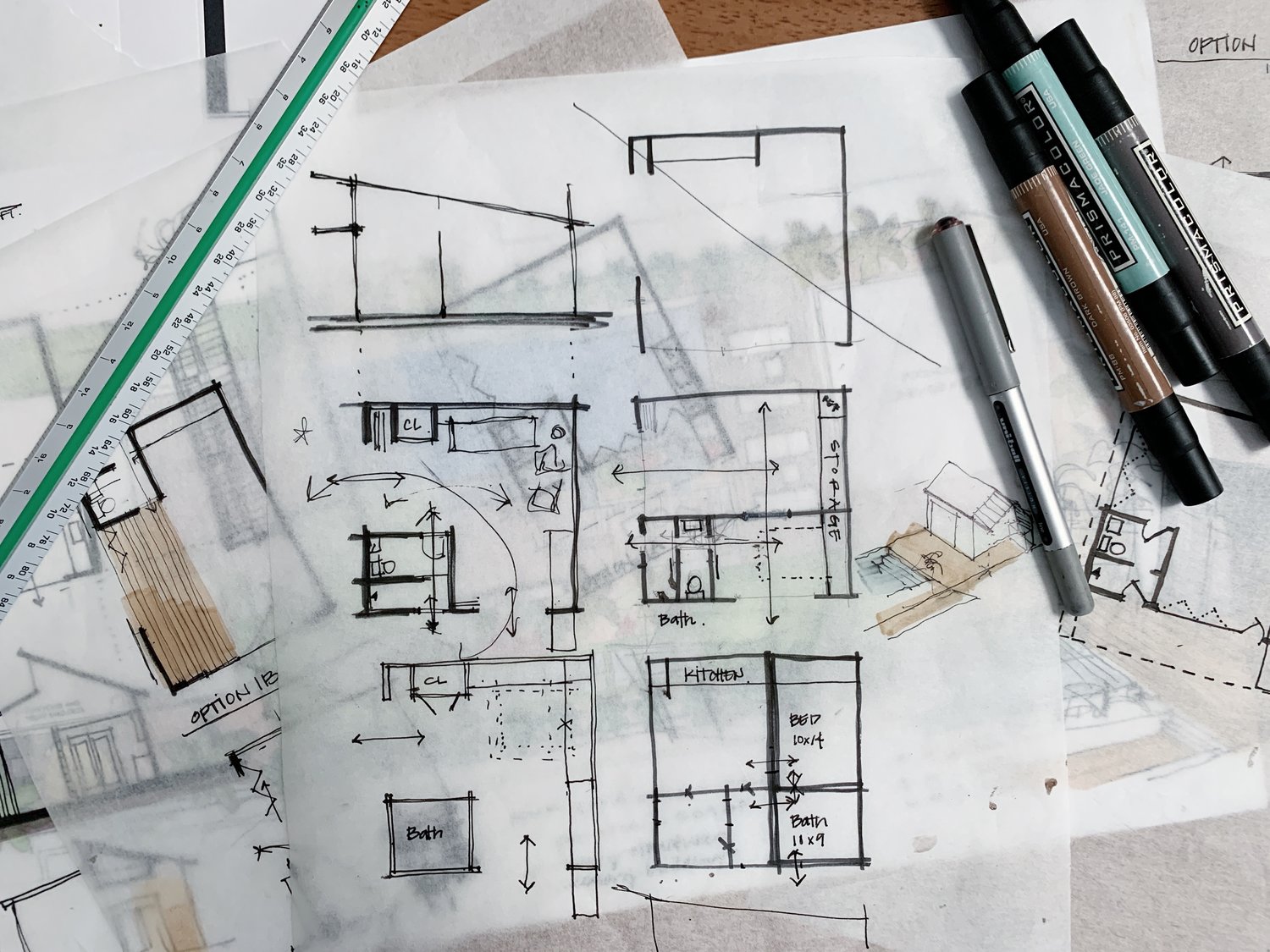Architect Career Path: Competencies, Education, and Advancement Guide
Architect Career Path: Competencies, Education, and Advancement Guide
Blog Article
Understanding the Diverse Career Paths Available for Aspiring Architect
As an aspiring Architect, you have a world of job paths waiting on you. Each path offers distinct challenges and opportunities to apply your creativity and technological know-how. Whether you're drawn to typical architecture or the subtleties of lasting design, there's a specific niche that lines up with your interests. Comprehending these varied choices can shape your professional trip, but which instructions will you choose to check out first?
Traditional Design: Designing Buildings and Structures
Traditional design concentrates on creating structures and structures that mix performance with aesthetic charm. Your styles can reflect social heritage, showcasing regional traditions while satisfying modern requirements.
You'll create abilities in preparing, model-making, and site analysis, permitting you to envision and connect your ideas properly. Involving with customers, you'll require to recognize their vision and translate it into possible styles.
Moreover, building codes and sustainability techniques are crucial in your work, guaranteeing your frameworks are safe and eco pleasant. As you expand in your job, you'll locate possibilities in domestic, industrial, or perhaps repair tasks, each offering distinct obstacles. Accepting standard architecture paves the means for a meeting profession that pays homage to the past while shaping the future.
Urban Planning: Shaping Neighborhoods and Public Spaces
As an aspiring Architect, you can play an important role as a city organizer, changing just how neighborhoods connect and function. By utilizing area interaction techniques, you'll assure that homeowners have a voice fit their environment. Plus, incorporating lasting style concepts will certainly assist produce spaces that not just meet today's needs but likewise secure the future.
Duty of Urban Planners
While lots of might think of designers as the sole enthusiasts behind structures, urban organizers play an essential function in forming the wider landscape of neighborhoods and public rooms. By collaborating with various stakeholders, you'll help develop parks, transportation systems, and domestic areas that advertise social communication and accessibility. Your knowledge in spatial style and community dynamics allows you to envision future growth while maintaining social heritage.
Neighborhood Interaction Techniques
Effective neighborhood engagement strategies are vital for urban planners to guarantee that the voices of locals are heard and valued in the preparation procedure. To cultivate significant discussion, you need to focus on open online forums and workshops where area members can express their concepts and problems. By proactively paying attention and including responses, you'll create spaces that reflect the area's requirements, inevitably leading to more lasting and effective city environments.
Sustainable Design Principles
When creating metropolitan areas, including lasting layout principles is important for creating environments that prosper both environmentally and socially. You must begin by concentrating on power effectiveness, making use of products that minimize waste and promote recycling. Think about incorporating environment-friendly spaces, like parks and yards, to improve biodiversity and boost air quality. Promoting walkability and public transportation can reduce reliance on cars, promoting a healthier area.
Creating with water preservation in mind is likewise crucial-- assume regarding rainfall yards and absorptive surfaces to handle stormwater. Involving neighborhood participants during the planning procedure warranties that the spaces you produce meet their demands and encourage social communication. By accepting these principles, you'll add to dynamic, lasting metropolitan landscapes that benefit everyone.

Landscape Style: Developing Lasting Exterior Settings
As you discover landscape design, you'll discover vital design principles that create beautiful and useful outside areas. Sustainable practices play an important role in guaranteeing these environments prosper while lessening environmental influence. Plus, you'll find a selection of profession opportunities that permit you to make a genuine difference in how people communicate with nature.
Style Principles in Landscape
Comprehending design concepts in landscape design is necessary for creating sustainable outside environments that integrate with nature. You'll need to consider aspects like percentage, equilibrium, and scale to assure your designs really feel cohesive and welcoming. In addition, pay attention to seasonal changes, making with materials that match the environments year-round.
Sustainable Practices Review
Lasting techniques in landscape style not only concentrate on looks however additionally focus on ecological health and wellness and resource conservation. By integrating indigenous plants, you enhance biodiversity and decrease the requirement for chemical plant foods and pesticides. Applying efficient watering systems helps conserve water and decreases overflow, safeguarding nearby ecosystems. You can make rooms that promote soil wellness, such as practicing and making use of organic products permaculture principles. Furthermore, incorporating green framework, like rainfall gardens and permeable pavements, help in stormwater administration and decreases city warm. You add to a healthier earth and offer rooms that promote area connection when you develop exterior atmospheres with sustainability in mind. Ultimately, these methods guarantee your styles profit both people and the setting for several years to find.
Career Opportunities Exploration
With a solid foundation in sustainable techniques, landscape design supplies click here a variety of career paths that enable you to make a purposeful influence on the environment. You might function as a landscape developer, creating aesthetically pleasing and practical outdoor areas, or focus on environmental reconstruction, assisting to restore damaged environments. Urban planners commonly team up with landscape engineers to develop green spaces in urban setups, boosting city livability. If you're enthusiastic concerning education and learning, consider ending up being a landscape design teacher, motivating future generations. In addition, you could collaborate with nonprofits concentrated on ecological sustainability or take part in study to innovate new methods. Each course not just shapes lovely atmospheres yet also promotes a much healthier planet for future generations.
Sustainable Design: Concentrating On Eco-Friendly Practices
As you discover your profession in architecture, welcoming eco-friendly methods can set you apart in a competitive area. Lasting design focuses on producing structures that reduce ecological effect while boosting resident health. By incorporating eco-friendly materials, energy-efficient systems, and sustainable structure techniques, you'll add to a greener future.
Beginning by gaining expertise of environment-friendly qualifications like LEED or BREEAM, which can strengthen your qualifications. Take into consideration how all-natural light, ventilation, and thermal performance can enhance layout. Collaborate with designers and ecological specialists to innovate remedies that reduce waste and save sources.
Do not forget the relevance of community participation-- interesting local stakeholders can influence layouts that balance with the atmosphere. As customers increasingly prioritize sustainability, your knowledge in green methods will certainly not just bring in projects but also satisfy your enthusiasm for liable style. Welcome this important facet of the career, and watch your occupation prosper.
Historic Preservation: Securing and Bring Back Cultural Heritage
While you begin on your building journey, think about the necessary duty of historical conservation in keeping our social heritage. This field concentrates on the defense and restoration of significant buildings, websites, and frameworks that inform the stories of our past. By engaging in historic conservation, you'll help protect the architectural legacy that shapes neighborhood identification.
As a historic preservation Architect, you'll examine historical relevance and assess the problem of frameworks. You'll function carefully with conservationists and historians to ensure genuine repair techniques are utilized. This job course allows you to mix imagination with research study, allowing you to create remedies that appreciate original products and workmanship.
Your work not only adds to sustainability by reusing existing structures yet likewise promotes a sense of satisfaction within areas. Welcoming this path will certainly assist you come to be a guardian of background, maintaining the stories and visual appeals that enhance our lives.
Interior Design: Enhancing Indoor Spaces
Historic conservation and indoor style both share a commitment to boosting the constructed atmosphere, however they concentrate on different aspects. While historical preservation stresses keeping a structure's social and historical value, indoor design zeroes in on maximizing indoor rooms for capability and appearances.
As an ambitious Architect, you'll find that interior architecture allows you to blend creativity with technological skills. You'll design areas that not just look good yet additionally advertise more info convenience and effectiveness. This field entails understanding exactly how light, color, and products engage within an area, impacting state of mind and usability.
You'll service different jobs, from domestic homes to industrial offices, making certain that each atmosphere fulfills the requirements of its owners. By focusing on individual experience, you can transform interiors right into practical and motivating rooms, making a significant impact on how people connect with their surroundings. Embrace the possibility to enhance interior environments and form the method people live and work.
Industrial Layout: Merging Capability With Visual Appeals
Commercial style plays an essential function in producing items that flawlessly mix aesthetic appeals with functionality, making certain that what you use day-to-day is not just visually enticing yet likewise functional. As an aspiring Architect, you might engage on your own in this area, concentrating on creating whatever from furnishings to customer electronics. Your job involves understanding customer needs, materials, and producing processes, permitting you to produce ingenious remedies that improve day-to-day experiences.
In industrial design, you'll often collaborate with designers, online marketers, and manufacturers, guaranteeing that your layouts are not just gorgeous but additionally feasible. You'll find out to stabilize kind and feature, prioritizing use without compromising style. By refining your abilities in mapping out, 3D modeling, and prototyping, you'll be fully equipped to bring your ideas to life. This occupation path uses a vibrant environment where creative thinking fulfills practicality, making it a fulfilling option for architects curious about shaping the items of tomorrow.
Often Asked Inquiries
What Educational Certifications Do I Need to End Up Being a Designer?
To come to be an engineer, you'll require an expert level in architecture, typically a Bachelor's or Master's. In addition, you'll have to complete a check here teaching fellowship and pass the Architect Registration Examination to practice legally.
Exist Qualification Demands for Different Architectural Profession Paths?
Yes, there're certification needs for different building courses. Architect. You'll require to pass examinations, complete internships, and sometimes seek specialized training, relying on your selected focus, like landscape architecture, city layout, or historical conservation
What Software Application Abilities Are Necessary for Designers Today?

How Can I Gain Practical Experience While Studying Style?
You can obtain functional experience by interning at architectural firms, participating in design competitors, volunteering for area projects, or collaborating with schoolmates on real-world projects. These chances improve your abilities and develop beneficial links in the market.
What Task Opportunities Exist Outside Standard Design Firms?
You can check out numerous task possibilities outside standard design firms, like metropolitan planning, indoor style, landscape design, building administration, actual estate growth, or also functions in sustainability consulting. Each offers distinct difficulties and rewards.
Whether you're attracted to standard design or the nuances of lasting design, there's a specific niche that straightens with your interests.When creating urban areas, incorporating sustainable design principles is critical for creating environments that thrive both environmentally and socially.As you check out landscape architecture, you'll find crucial style principles that create attractive and functional outdoor areas.Recognizing layout principles in landscape design is crucial for producing sustainable outside settings that harmonize with nature.In industrial design, you'll usually work together with designers, marketers, and makers, making certain that your layouts are not just gorgeous but additionally possible.
Report this page